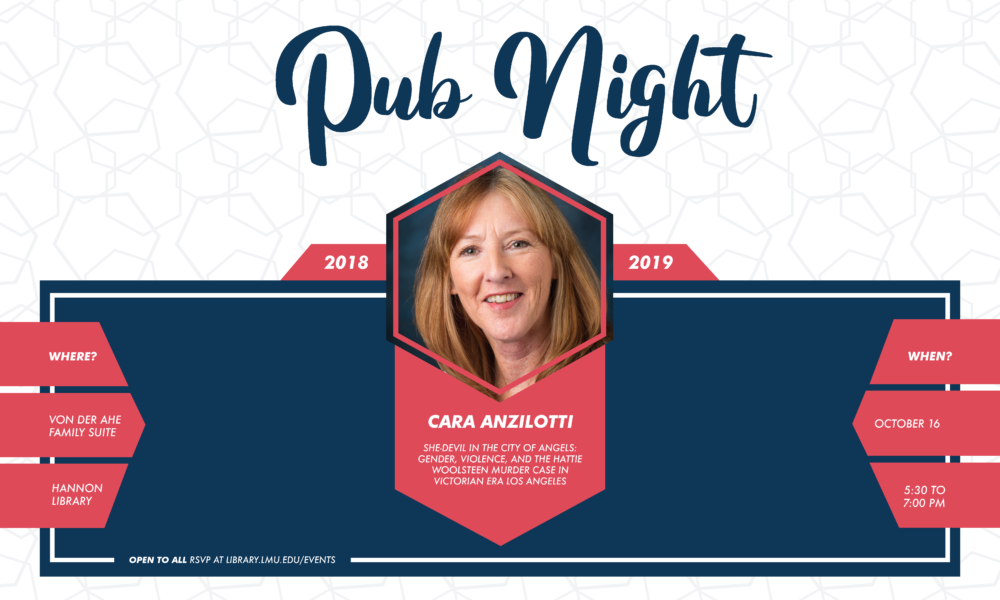
Reflection by Thomas Duncan ’19, history major.
 “Hattie Woolsteen was a con artist. Dr. Charles Harlan was a con artist. And when two con artists try to con each other someone ends up dead.”
“Hattie Woolsteen was a con artist. Dr. Charles Harlan was a con artist. And when two con artists try to con each other someone ends up dead.”
Overlooking the Bluff from the Von der Ahe Suite in the William H. Hannon Library, Cara Anzilotti, associate professor of history, introduced her recently published book, She-devil in the City of Angels: Gender, Violence, and the Hattie Woolsteen Murder Case in Victorian Era Los Angeles. Her book charts the murder trial of Hattie Woolsteen and examines the reaction of the Victorian Angelenos who confronted a case that challenged their conceptions of gender roles, sexuality, and class.
At the height of the Victorian Era, Woolsteen moved from Peoria to Los Angeles in search of opportunity. While in Los Angeles, Woolsteen began an affair with a married dentist named Dr. Charles Harlan. So of course, in 1887, when Harlan turned up shot, bludgeoned, and burned, Hattie was the prime suspect. The Chief of the Los Angeles Police Department, Patrick Darcey, handled the investigation personally. He interrogated Woolsteen several times, and the story she told of Dr. Harlan’s untimely demise could generously be described as dubious. In subsequent interviews with Darcey and his deputies, her story changed but remained unbelievable.
During this time, the professional press of Los Angeles was in its infancy, and the Woolsteen case was one of the first major crimes to capture its attention. The press was quick to vilify the obviously guilty Woolsteen, with one paper dubbing her “Wicked Woolsteen.” However, initial coverage of the case and Darcey’s prime suspect collided head on with a burgeoning women’s rights movement and strictly gendered Victorian ideals. Women were widely seen as morally superior to men, as men were seen as more aggressive, and it was a woman’s job to balance this aggression with her moral tranquility. Therefore, it seemed impossible that a woman could also be a murderer. Anzilotti argues that Woolsteen was an inconvenient perpetrator for the Victorians because she was a woman.
Woolsteen rapidly received an image makeover, becoming a hapless victim of Harlan’s lies and aggression. The press, and Woolsteen’s lawyers, concocted a story portraying Harlan as a corrupt, sexual miscreant who attempted to force himself upon Woolsteen. This story fit better with the public’s notion of gender roles and ultimately persuaded a jury to clear her of all charges.
After concluding her presentation, Anzilotti took questions from the audience. Some attendees asked about Dr. Harlan’s wife. Anzilotti confirmed that the press vilified her along with Harlan for failing in her womanly duties to curb her husband’s vices. Anzilotti also fielded questions about the nineteenth-century press. She noted that even in the early days of the press, there was an element of entertainment to its coverage, and that the truth was not always the first thing on a journalist’s mind.
She-devil in the City of Angels highlights the fascinating interplay between gender roles, a burgeoning Los Angeles press, and crime in the late nineteenth century. If you are interested in learning more about Hattie Woolsteen, you can purchase Professor Anzilotti’s book from the publisher or on Amazon.



